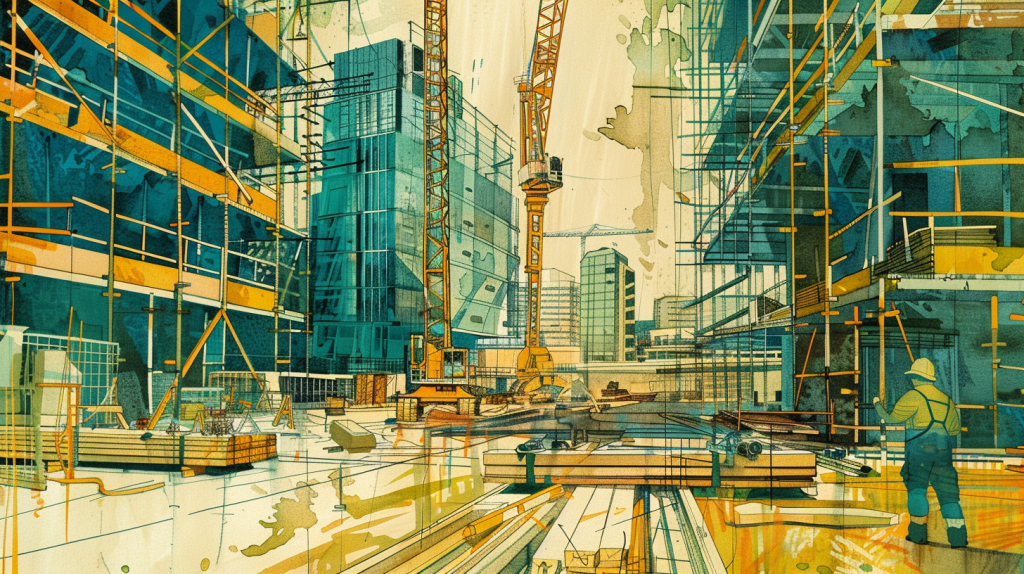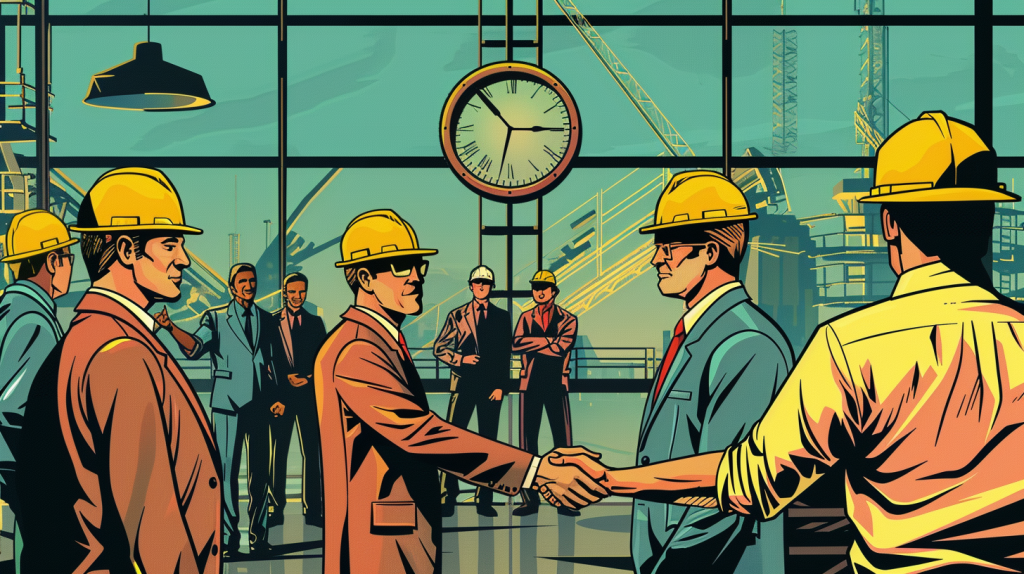Construction Scheduling: The Impact of Short-Term Scheduling on Green Building Projects
Table of Contents:
Uncover the benefits of visual short-term scheduling for green building projects, and how it revolutionizes planning and execution in the construction industry.
In the dynamic realm of construction, the success of green building projects hinges on meticulous planning and efficient execution. As sustainability takes center stage, project managers are turning to visual short-term scheduling as a powerful tool to revolutionize their approach to project planning and execution. Let’s uncover the benefits of visual short-term scheduling for green building projects and explore how it’s reshaping the construction industry.

The Power of Visualization
Visual short-term scheduling offers project managers a clear and intuitive way to plan and track project activities. By representing tasks, timelines, and resources visually, project teams can easily grasp the project’s progression and identify potential bottlenecks or resource conflicts. This level of clarity empowers project managers to make informed decisions, optimize resource allocation, and ensure that sustainability goals remain at the forefront of project planning and execution.
Enhancing Collaboration and Communication
One of the most significant benefits of visual short-term scheduling is its ability to enhance collaboration and communication among project stakeholders. By providing a visual representation of the project schedule, project managers can effectively communicate project timelines, milestones, and priorities to all team members, subcontractors, and stakeholders. This shared understanding fosters collaboration, aligns efforts towards common goals, and minimizes misunderstandings or delays that could impact the project’s sustainability objectives.
Streamlining Resource Allocation
Visual short-term scheduling enables project managers to optimize resource allocation for maximum efficiency and sustainability. By visually representing resource availability and requirements, project managers can identify opportunities to streamline resource usage, minimize waste, and maximize productivity. Whether it’s labor, materials, or equipment, visual short-term scheduling allows project managers to allocate resources strategically, ensuring that resources are utilized effectively to support sustainability goals and project success.
Improving Risk Management
Green building projects often face unique challenges and uncertainties, from fluctuating material costs to weather-related delays. Visual short-term scheduling provides project managers with a powerful tool for risk management by enabling them to anticipate potential risks and develop contingency plans. By visualizing project dependencies, critical paths, and potential bottlenecks, project managers can proactively identify and mitigate risks before they impact the project’s schedule or sustainability objectives.
Increasing Stakeholder Engagement
Visual short-term scheduling enhances stakeholder engagement by providing a transparent and accessible view of the project’s progress and timeline. Whether it’s project owners, investors, or regulatory agencies, stakeholders can easily track the project’s advancement and gain confidence in its sustainability and success. This increased transparency and accountability foster trust and collaboration, creating a positive environment for green building projects to thrive.
Embracing Technology and Innovation
In the digital age, visual short-term scheduling tools are leveraging advanced technologies such as cloud computing, artificial intelligence, and data analytics to further enhance their capabilities. From interactive Gantt charts to 3D modeling and simulation, these innovative tools are pushing the boundaries of what’s possible in project planning and execution. By embracing technology and innovation, project managers can unlock new opportunities for sustainability, efficiency, and excellence in green building projects.
Real-World Examples
Let’s take a look at some real-world examples of how visual short-term scheduling is revolutionizing green building projects:
- Solar Panel Installation: By visually scheduling the installation of solar panels, project managers can optimize resource allocation, minimize installation time, and maximize energy efficiency.
- LEED Certification: Visual short-term scheduling enables project managers to track and manage tasks related to LEED certification, ensuring compliance with sustainability standards and maximizing the project’s environmental performance.
- Waste Reduction: By visually representing material deliveries and usage, project managers can identify opportunities to reduce waste, recycle materials, and minimize the project’s environmental footprint.

StruxHub
Discover how StruxHub can revolutionize your construction management. Contact us today!
Here are Ten Real-Life Tips for Construction Supervisors:
Prioritize Safety Above All: Safety should always be the number one priority on any construction site. Ensure that all workers are trained in safety protocols, provide appropriate safety gear, and conduct regular safety inspections to prevent accidents and injuries.
Effective Communication: Good communication is essential for smooth operations on a construction site. Keep lines of communication open with all team members, subcontractors, and stakeholders to ensure everyone is on the same page regarding project goals, timelines, and expectations.
Plan and Organize: Proper planning and organization are key to successful construction projects. Develop detailed project plans, schedules, and budgets, and regularly review and adjust them as needed to keep the project on track.
Manage Resources Wisely: Efficient resource management is crucial for controlling costs and optimizing productivity. Keep a close eye on material usage, equipment allocation, and labor resources to prevent waste and maximize efficiency.
Stay Flexible and Adaptable: Construction projects are inherently dynamic, with unexpected challenges and changes often arising. Stay flexible and adaptable in your approach, and be prepared to adjust plans and schedules as needed to address issues and keep the project moving forward.
Lead by Example: As a construction supervisor, you set the tone for the entire team. Lead by example by demonstrating professionalism, integrity, and a strong work ethic, and inspire your team to do the same.
Foster Teamwork and Collaboration: Construction is a team effort, requiring collaboration and cooperation among all team members. Foster a positive work environment where everyone feels valued and supported, and encourage teamwork to overcome challenges and achieve success.
Embrace Technology: Technology can greatly enhance productivity and efficiency on a construction site. Embrace tools and software that streamline processes, improve communication, and provide valuable data insights to make informed decisions.
Continuously Improve: Construction is an ever-evolving industry, and there’s always room for improvement. Encourage a culture of continuous learning and improvement among your team, and seek out opportunities to implement new techniques, technologies, and best practices.
Maintain Quality Standards: Delivering a high-quality finished product is essential for customer satisfaction and reputation. Ensure that all work meets or exceeds quality standards and specifications, and address any issues or deficiencies promptly to maintain the project’s integrity.
Paving the Way to Sustainable Construction
Visual short-term scheduling is not just a tool; it’s a mindset shift that’s transforming the way green building projects are planned and executed. By providing project managers with a clear, intuitive, and collaborative approach to project scheduling, visual short-term scheduling is paving the way to sustainable construction. As the construction industry continues to prioritize sustainability and innovation, visual short-term scheduling will play an increasingly important role in driving efficiency, minimizing waste, and achieving green building goals.
With its ability to enhance collaboration, streamline resource allocation, and mitigate risks, visual short-term scheduling is empowering project managers to lead the charge towards a more sustainable and resilient built environment. By harnessing the power of visualization, project managers can unlock new opportunities for sustainability, efficiency, and success in green building projects, ensuring a brighter future for generations to come.
StruxHub is a construction project management software that helps you manage projects from start to finish. It offers features like task management, document management, and communication tools. StruxHub can help you save time and money, improve communication, collaboration, and decision-making.
To learn more about how StruxHub can streamline your construction management processes, request a demo today. By completing our form, you’ll hear from our team soon to discuss how StruxHub can help you:
- Schedule construction material deliveries with your trades
- Coordinate construction site resources and on-site logistics
- Digitize work permits and inspection forms
- Communicate and track P6 and Excel schedules
- Broadcast announcements to all construction workers
Don’t miss out on the opportunity to optimize your construction management processes with StruxHub. Sign up for a free demo today.



